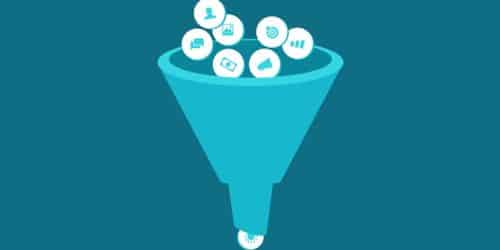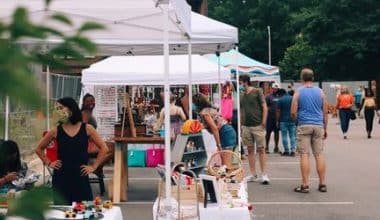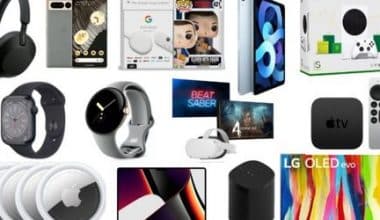Any business selling products or services online has a conversion funnel – but not everyone understands it. If you’re wondering what a conversion funnel is or how you may enhance yours for your marketing strategies, you’re in the correct place. In this post, we’ll go over everything you need to know about conversion funnels. We’ll start with the basics — what conversion funnels are and the three important stages — before going on to some of the most effective techniques for optimization of your conversion funnel and increasing sales. Let’s get started!
What is a Conversion Funnel?
A conversion funnel is a means to understand the flow of potential leads into paying customers. Just like a funnel directs liquid or powder into a small aperture, a conversion funnel directs clients to the last step or desired action (purchase or a conversion event).
A conversion funnel in internet marketing is a continual mission of acquiring, retaining, and developing your client base while utilizing technology and other accessible tools to suit their demands more efficiently. It’s lead nurturing, behavioral targeting, retention, and referrals all rolled into one.
Why are Conversion Funnels Important?
Conversion funnels are important because;
- They can help your marketing team be more effective
- They assist to demonstrate the customer journey, which is useful for understanding how your visitors explore your website/store.
- They can determine which stage of the buyer’s journey has the highest failure rate.
All of these factors are critical for increasing your brand’s conversion rate. The proportion of visitors or users to purchases or subscribers is known as the conversion rate. A 20% conversion rate means that 20% of all visitors to your store purchase anything or sign up for something.
When you employ a marketing conversion funnel, you can establish, for example, which step of the buyer’s journey is the most difficult. Are most of your visitors abandoning the conversion funnel at the top? This could indicate an issue with your website’s landing page or with your brand’s reputation.
Instead, perhaps the majority of your users exit the conversion funnel around the bottom. That could indicate an issue with the checkout conversion process or that your product copy isn’t properly converting users into customers.
Stages of a Conversion Funnel
The top-middle-bottom funnel is a popular model used by sales teams, which focuses on creating interest, enlightening potential consumers, convincing them to purchase, and building loyalty so they become repeat purchasers.
Traditional Conversion Funnel Stages
- TOFU (top of the funnel): This is the period of being aware. Potential consumer enters the TOFU when they engage with your brand, frequently through your website, an ad, an email, or social media.
- Middle of the funnel (MOFU): This is the consideration phase. The potential customer is aware of your brand and interacts with it to learn more. They may sign up for your email newsletter, follow you on social media, or download instructions and templates.
- BOFU (bottom of the funnel): This is the conversion step. A prospect is here immediately before they buy, which means you’ve provided them with useful information and touchpoints. Make it easy for customers to buy by offering a trial, explaining the price, or sending a discount for their abandoned shopping cart.
Let’s have a look at how this looks visually in the examples below.
Examples
HubSpot started off with the usual conversion funnel structure, leveraging marketing efforts to act as the top of the funnel. These leads were then given to the sales team farther down the funnel.
While some conversion funnels are straightforward, others can be extremely complex. There are various conversion models to choose from, ranging from a simple three-stage funnel for small businesses to complex, multi-stage sales funnels for large corporations. Let’s investigate some of the most frequent models.
Marketing Conversion Funnel with Three Stages
- Awareness: Get people to your website. Attract them with outstanding blog pieces or social media.
- Consideration: Consider using that fantastic content to encourage more people to join your newsletter.
- Conversion: Now that prospects are familiar with your brand, urge them to buy by presenting a discount coupon for first-time purchasers.
AIDA Conversion Funnel Model
The AIDA model, sometimes known as a “buy funnel,” expands on the fundamental three-stage framework.
- Attention: In addition to blog posts and social media, you may employ targeted ads to drive traffic to your website.
- Interest: Ignite the prospect’s interest in your product by showing the goods. Utilize case studies to demonstrate how your product has aided other companies. Have remarkable press mentions? You’ll want to exhibit those as well.
- Desire: Your prospects like you; now you must make them desire you. Earn their trust and develop an emotional connection. Continue to provide information that assists them in visualizing how your product would fit into their lives and why they require it.
- Action: It is your chance to persuade them to convert. One option is to give a free ebook, trial, or tool that’s only accessible if they complete up a form with their contact information. If your goal is to persuade them to buy a product, you may make them a special offer.
The complexity of your funnel increases with the length of your sales cycle. If your sales cycle is short, your funnel is easier.
Consider the time it takes to sell $2,000 B2B software versus a $20 t-shirt. The software purchase typically requires months of sales calls, marketing materials, FAQs, and demos. Each of those represents a distinct stage in your conversion funnel. But potential consumers may just take five minutes to find out that the t-shirt is the proper color and fit before purchasing. The touchpoints necessary here are taking it off the rack and trying it on.
You can look at the data and run an analysis to determine how sophisticated your conversion funnel is. This will assist you in flushing out each stage of your client experience in order to generate a distinct visual representation of your funnel.
What Distinguishes a Conversion Funnel From a Sales Funnel?
The terms conversion funnel and sales funnel are frequently used interchangeably, but are they interchangeable? The answer is no, despite the fact that they are closely connected. When a potential customer enters the sales pipeline, the sales funnel begins. This can occur both online (in an e-commerce context) and offline. A prospect, on the other hand, usually does not join your sales funnel until they are already familiar with your brand and your products or services.
In the online age, this can take some time, especially if you’re targeting people who have never heard of your brand before. Building a connection and trust with your audience takes time.
A conversion funnel can help with this. The goal here isn’t merely to make a transaction. Making a connection with your audience, getting leads, and then taking those leads on a journey with your organization are all part of it. Prospective consumers may enter your funnel completely unaware of who you are or what you do. Over time, your funnel will warm them up, create trust in your offer, and prepare them to buy. It includes the complete process – from the first contact up to purchasing.
Conversion Funnel Optimization
The simplest approach to begin thinking about sales conversion funnel optimization is to divide it into three sections: upper, medium, and bottom. Attracting new visitors is the purpose of the top funnel. The intermediate funnel is in charge of converting new visitors into qualified leads, whereas the lower funnel is where macro conversions, or purchases, take place. Several marketing strategies are used since each stage of the conversion funnel requires a unique strategy.
#1. Optimization of the upper conversion funnel
The traffic you send to your online store will significantly affect the effectiveness of your conversion journey. If you’re bringing in garbage traffic and visitors who have no interest in your items, the robustness of the sales funnel won’t matter a whit because individuals will leave off right away. Concentrating on driving quality traffic is the first step to enhancing the upper funnel and there are several approaches you can test:
- Optimizing your keywords for paid search and display ads
- Readjusting the targeting of your social media advertisements (Facebook, Instagram, LinkedIn Ads)
- Producing original, keyword-optimized content (blog posts, eBooks, guides, infographics, videos, etc.)
- Taking advantage of the potential of social media
#2. Optimization of the middle conversion funnel
So you got people’s attention and they came to your website; now what? That’s where the real labor begins. Building trust with your prospects and showcasing the value of your items are the main goals of the middle funnel. Depending on the length of your conversion path, you may require a lot of different encounters with your clients to gain their loyalty and progress them down the funnel.
Testimonials, product reviews, case studies, community forums, pricing comparisons, numerous merchandising tactics, automated marketing campaigns, interesting content, and so on are all available here. Knowing your customer’s mindset and expectations will be critical to the success of your methods, therefore running continuous A/B tests, gathering feedback, and tracking key metrics is essential.
#3. Lower conversion funnel optimization.
Once your leads drop down into the last stage, you need to start pulling them into new conversion funnels. You’ve done all this hard work guiding them from the awareness stage to the final purchase, letting them go now would be a tremendous loss. eCommerce companies that can convert one-time consumers into repeat customers are on the right route. The more client data you have, the more personalized and targeted experiences you can design to keep them interested and wanting more. Once a prospect has converted, return it to the nurturing phase and continue to establish rapport with customized offers and email marketing.
Optimization of Your Conversion Funnel to Prevent Cart Abandonment
There are various reasons why a potential buyer will abandon their basket. They could be browsing, comparing prices, or forgetting to complete their transaction. Abandoned carts do not indicate failed sales, so you may still contact them via email marketing, retargeting ads, or even push notifications.
- Abandon Cart Emails; to remind the user that they have items in their cart,
- Remarketing Campaigns; highlighting the importance of one of the products in the user’s cart,
- Push Notifications; mentioning a price drop on a product in a user’s cart are all campaigns you could run to reduce cart abandonment.
Conversion Funnel Analysis
Barriers and friction abound in funnels. Studying your funnel allows you to see how potential clients move through each point.
To get a sense of how users end up in each stage of the funnel, look at significant traffic sources and high-exit pages.
It’s also a good approach to identify roadblocks that cause consumers to abandon a page before converting. If you notice a high drop-off rate on one page, for example, you’ll know to prioritize it as you strive to optimize your funnel.
To understand your funnel, follow these steps for in-depth analysis:
#1. Search for pages with a high drop-off and conversion rate.
High-traffic pages provide a variety of useful information. Not only are these the most visited pages, but they are also where people decide whether or not to stay. Examine the pages where individuals abandon (or leave) and where they convert (take your intended action).
- Cost Per Acquisition (CPA)
- Customer Lifetime Value (CLV)
- Drop-Off Rate
- Ratio of Conversion
- Number of Marketing Qualified Leads (MQLs)
- Customer Conversion Rate from MQLs
- Conversion Rate Per Channel (i.e., social, email, and paid search)
#2. Determine the source of your top customers.
Not all leads are the same. Some people drop out around the top of the funnel, while others make it all the way down. That is why tracking leads is so crucial. When you know where your high-quality leads come from, you can evaluate that touchpoint or channel to determine what you’re doing properly. Consider this:
- What distinguishes this touchpoint from others?
- What information is resonating with people?
- What are the obstacles or points of friction (if any)?
- How many steps must someone take before converting?
Finding out what you’re doing properly in your funnel is equally as crucial as figuring out what you’re doing wrong. If you need assistance looking through the data, look at these sales funnel tools or heatmap and session tracking tools for insight into how visitors explore your pages.
#3. Develop an optimization strategy.
It’s time to create an optimization strategy once you’ve determined where customers are dropping off and converting. Included in this should be the objectives you wish to pursue (i.e., more leads, newsletter signups, demos, or software purchases).
Objectives enable you to establish what you want from each touchpoint within your funnel so you can monitor whether it’s working or not.
Following your funnel analysis, you’ll have a list of priority touchpoints to optimize. Make sure to prioritize the areas with the highest drop-off rates.
Conclusion
There are several things that organizations can do to help streamline their conversion optimization, whether they are small or large. The smallest changes can make a huge effect, and optimizing for processes like mobile is not only required but critical to eCommerce success.
Always keep your target audience in mind: what is their buyer’s journey like, and how can you present information that will alleviate their anxieties and excite them about your products?
You’ll set yourself up for greater success by making each stage of the eCommerce conversion funnel more navigable.
Related Articles
- SALES FUNNEL: Meaning, Stages, Template & All You Need
- MARKETING VS SALES: What Are the Major Differences?
- Guide To Effective eCommerce Marketing Strategy: All You Need!
- SALES REPORT: SALES REPORT: What It Is, Objectives, and How to Write It






